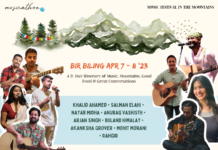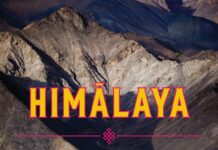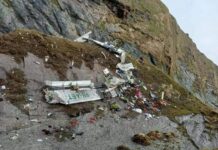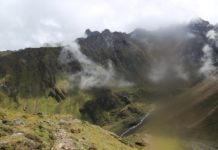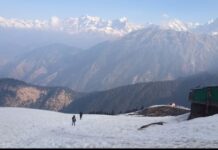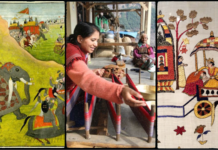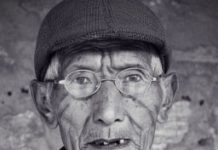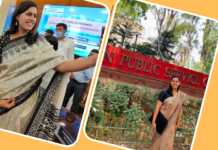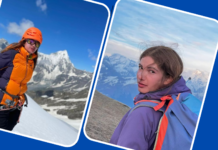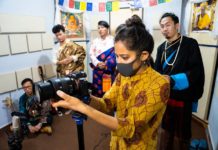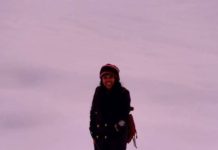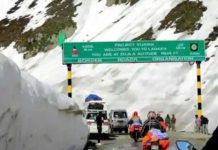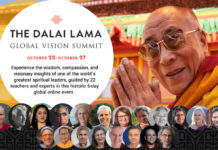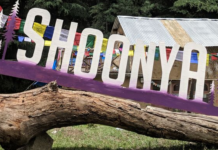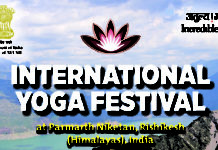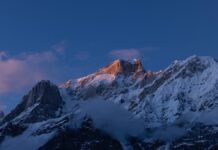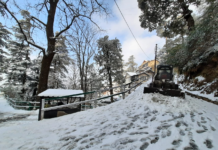As I stand in the queue at the Drukair check-in counter, I realize how little I know about my destination, and I marvel at the luggage carts overloaded with goods to be transported to Paro along with the passengers. Carts are full of flat-pack furniture, large-screen televisions and household items I later learn are difficult to source in Bhutan. My travel companion is even more unaware than myself, not realizing that our flight has a brief stop in India just before the onward 20-minute flight into Paro.
Thankfully the forecast in Paro is clear and crisp. These weather conditions are important as Paro flights operate by ‘visual flight rules’ which means that flights cannot operate at night or in poor visibility conditions. As our plane crosses into the valley, we are gifted with views of the Himalayas and the plane banks sharply as it navigates through narrow openings in the mountains before landing smoothly on a rather short airstrip. Yes! I have made it to Bhutan, a destination that I thought would continue to be only a dream due to expense, distance and limited numbers of visitors allowed.
Currently living in Southeast Asia negates the distance excuse, and the visitor limit rules have changed. Apart from Indian tourists and foreign residents all tourists are required to pay a fixed daily rate of US$250 per person per day (US$200 a day from December-February and June-August), with a US$40/$30 surcharge per person for those in a group of one/two. This daily rate covers accommodation, transport in Bhutan, a guide, food and entry fees. (Please check current policy to verify this information.)
Our guide and driver meet us just outside the airport doors, and our journey begins. I spend the next eight days as if I am in a dream. The landscape, ever changing vistas, architecture, people, food, and culture are mesmerizing. In the early mornings, I go for walks outside and observe the cities and villages and their people, shops, and animals waking up and preparing for a new day.
I chose to visit Bhutan in the winter because I want to see the black-necked cranes in Phobjikha Valley. These beautiful creatures migrate from Tibet to Phobjikha each year for the winter, and a festival is held in November to honor these endangered birds. The Royal Society for the Protection of Nature Bhutan (RSPN) has worked with locals to protect the crane’s habitat and to ensure their ongoing migration and survival.
With thanks to our guide, we are treated to an impromptu lunch at a local’s home in Phobjikha, where we witness aspects of daily life in the countryside and chat with them about everyday life and the future. We also discover that there are two degrees of separation amongst the Bhutanese population which isn’t hard to understand given the population, and the fact that the country was closed to the outside world until recent times.
Bhutan is a landlocked country, often referred to as the last Shangri-La, and is rather isolated which has helped to keep the country from being overrun by mass tourism. Tourists were not allowed until the 1970s, and television and Internet have been allowed since 1999. There has been movement into modern times with positive and progressive changes for the population. The first general election took place in 2008. English-language is the medium of education. Everyone has access to healthcare, electricity, and Internet. Plastic bags are banned, and 60% of the country must remain forested. The country officially measures Gross National Happiness (GNP) rather than Gross National Product (GNP).
During our eight-day journey, we visit Thimphu, Punakha, Phobjikha and Paro. Our accommodation is comfortable, warm and the hosts are lovely and welcoming. We become obsessed with ema datshi, the national dish of cheese and chili peppers, and our guide ensures that we have it twice a day, every day until we leave. We try many other local dishes on our travels and enjoy everything much to the surprise of our servers. We sample the famous butter tea and learn that we prefer a particular mix of saltiness and creaminess.
We walk through forests of pine and fir trees and open high plains, observe Takin’s grazing, visit monasteries and nunneries, share tea with monks, silently watch Buddhist rituals for mourning families, tour Dzongs and learn about architecture and artisans, and have funny conversations with local children and other tourists. We travel up and over the Dochula Pass, hoping for a clear view of the Himalayas, and awestruck by the views regardless. At one point on our journey, we encounter a broken-down car blocking the highway and along with several other motorists assist in moving it out of the way so traffic can move again.
The pinnacle of the journey for me was hiking up to the Tiger’s Nest, Paro Taktsang, a Buddhist temple complex nestled into a cliffside at 3,120 meters (10,240ft) in the Paro Valley. I dreamed of visiting this sacred and mystical location for many years, and on that day, I felt as if I could run all the way to the top. Even our guide remarked on the pace I was taking. When we reached the final stage of the climb, with flights of descending and then ascending stairs, I started to feel a bit uneasy. I whispered a karakia (Maori prayer to summon protection) and almost floated up and into the complex grounds. Cameras are not allowed in the complex, and without a separate lens, I was prompted to focus on myself and the surroundings. It was a poignant moment and one that I will never forget it.
Along mountain peaks and ridges, across bridges, and around monasteries and meditation centers you see prayer flags blowing in the wind. To me, these flags have a spiritual aspect, and I learned on this journey that the wind takes the prayers into the air, and anyone who is touched by this wind will feel happier and uplifted. What a beautiful idea. Thank you Bhutan for an extraordinary journey.


